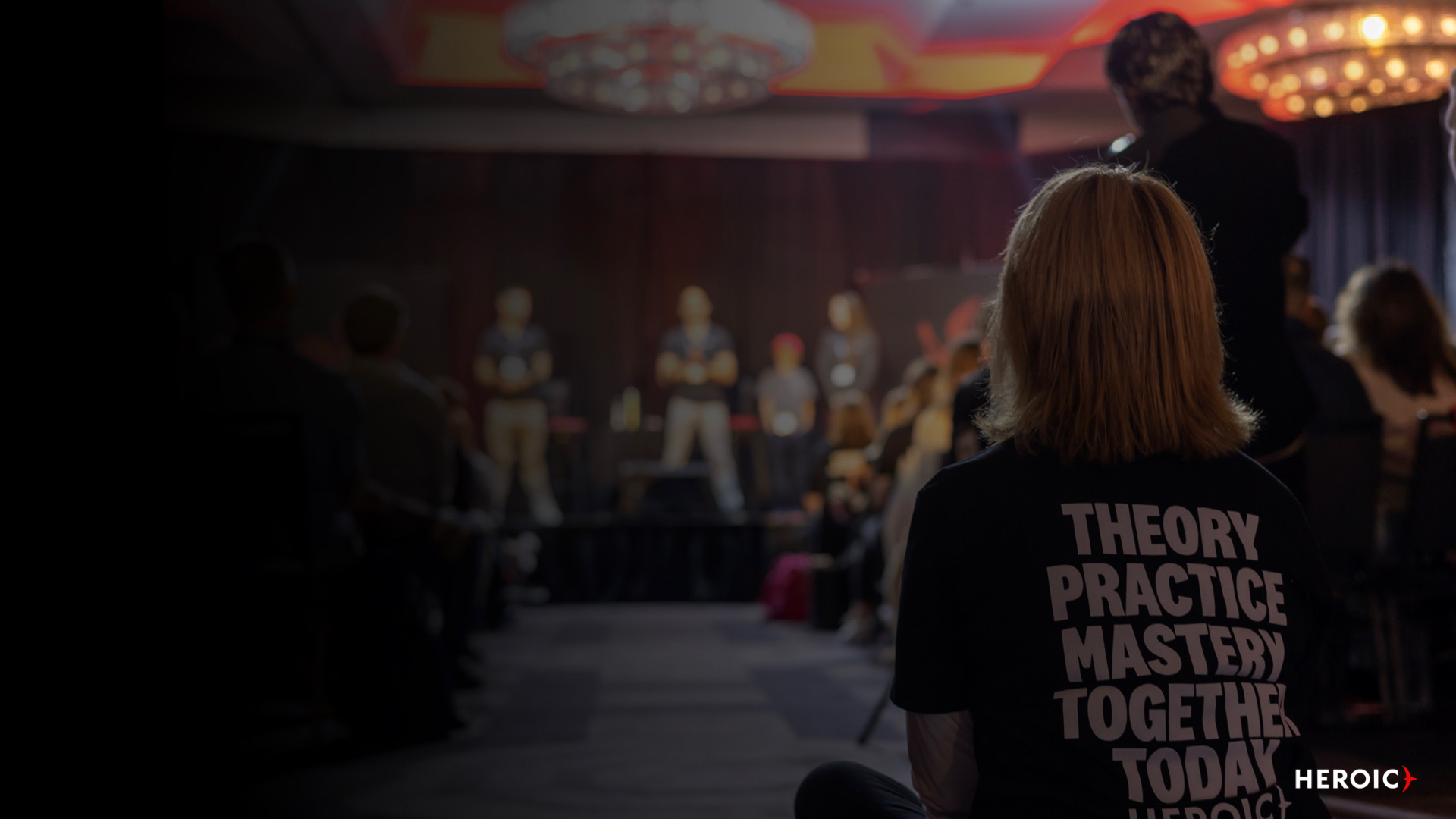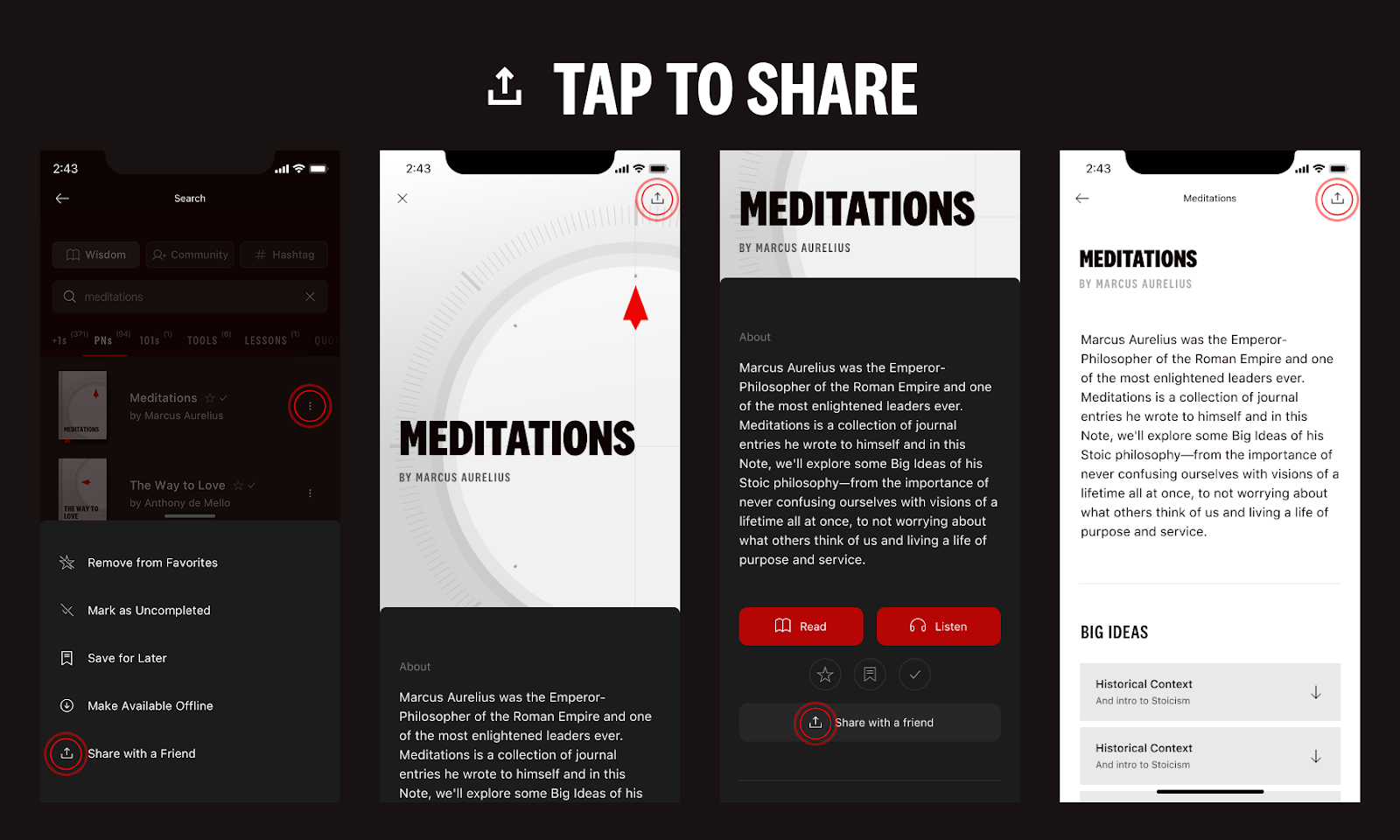How to Define & Operationalize Core Values to Drive Performance

By Michael Balchan, CEO
What You’ll Walk Away With
- Two proven frameworks for defining core values.
- A step-by-step process used by leading experts and organizations, including EOS, Jim Collins, and Patrick Lencioni.
- A bottom-up, behavioral-first process with a deeply operational focus.
- Practical ways to hire, fire, celebrate, correct, and empower using values.
- A downloadable PDF cheat sheet to use with your own team.
In this post, I’ll cover the frameworks and how we personally applied them. Then, in the next post, I’ll share our specific Core Values & Core Principles so you can see the qualities and behaviors we live by.
Why Core Values Matter
“Core values are essential for enduring greatness.... The point is not what core values you have, but that you have core values at all, that you know what they are, that you build them explicitly into the organization, and that you preserve them over time.” - Jim Collins, Good to Great
“An organization’s core values should provide the ultimate guide for employee behavior at all levels…The importance of values in creating clarity and enabling a company to become healthy cannot be overstated.” - Patrick Lencioni, The Advantage
“Operational values are a key pillar for successful execution. You must be crystal clear on these values, because you want them to guide all discussions and all behaviors. They will dictate performance and whether or not you hit your outcomes.” – Matt McCall, Founder of Forge Capital, voted Top 100 VC in U.S
Core values aren’t slogans for a wall or a website. They are the non-negotiable behavioral standards that shape decisions, performance, and culture. They define who you are and how you’ll win.
The best companies don’t just state them or put them on a poster. They hire, fire, celebrate, and coach against them every single day.
The Backdrop: Three Nudges and an Upgrade
In Heroic’s early years, our operating playbook drew heavily from our Philosopher’s Notes on leadership, peak performance, and productivity.
In 2024, as we prepared to launch our 1:1 Heroic Performance Coaching and Heroic Workshop Instructor Certification programs, we partnered with Jeff Everage, the Founder/CEO of Trident, Level 2 Wim Hof Instructor, multi-modality coach, former Navy SEAL, and longtime Heroic student, Coach, and Investor.
While working together, Jeff repeatedly referenced various “EOS tools” (the Entrepreneurial Operating System) that he thought could help us take our operating disciplines to the next level.
Around the same time, Scott McIntosh (Heroic Arizona co-founder and a major Heroic Investor), started sharing blog posts about Heroic’s power to transform organizations, schools, and communities. At the bottom of Scott’s posts, we noticed multiple references to EOS.
Here’s Scott with fellow Heroic Arizona co-founder Stephanie Clerge (both left-center) at the Heroic Arizona launch event:
Then, our new VP of Growth, Brian Maxfield, told us that EOS had been the operating backbone of every company he’d led.
Three nudges in the same direction. That’s Joseph Campbell’s “invisible hands” and Phil Stutz’s winks from “The Field.”
Here’s Campbell from The Power of Myth (see Notes):
“I even have a superstition that has grown on me as a result of invisible hands coming all the time—namely, that if you do follow your bliss… you begin to meet people who are in the field of your bliss, and they open the doors to you. I say, follow your bliss and don’t be afraid, and doors will open where you didn’t know they were going to be.”
And our Heroic yoda, Phil Stutz, (see Notes on Lessons for Living):
"The field is an invisible force that is very creative. It’s goal-directed in terms of getting more of what you what you need and less of what you want."
After that third nudge, we decided to integrate EOS into Heroic’s DNA, while bringing our own philosophy and discipline to the process.
Entrepreneurial Operating System Foundations
To integrate EOS with speed and excellence, we worked with Al Moscardelli, one of EOS Worldwide’s top coaches, with an Expert-level designation (their highest) for 500+ sessions delivered. Our most recent March Quarterly was his 800th overall:
EOS follows a simple but rigorous sequence delivered through a series of full-day off-sites.
The first one, Focus Day®, installs EOS’s six foundational tools for creating Traction: the Accountability Chart, Rocks, Level 10 Meeting™ (and IDS®), Scorecard, Issues List, and To-Do List. Those tools can be used immediately to run an organization more effectively even without having a long-term vision fully baked. (Check out Traction, Get a Grip, and What the Heck is EOS for more.)
30+ days later, with a month of practice running the foundational tools, we went through Vision Building™ Day 1, where the first agenda item is: Core Values.
Fun aside: In another “field wink” moment, the morning that I started writing this article, another one of our big Heroic Investors texted me THIS photo, celebrating a recent merger he went through and that he was on Day 2 of EOS.
Look closely and see if you can tell what they happened to be working on when the picture was captured…
Yep: Core values.
Framework #1: EOS, Jim Collins, and Patrick Lencioni
To identify core values, EOS follows a process adapted from Jim Collins’ Mission to Mars Exercise and Patrick Lencioni’s framing in The Advantage, also described in this 2002 HBR article.
Here’s a paraphrased version of how Collins’ frames it up in Built to Last, with EOS’s and Lencioni’s additional distinctions:
- Set the Stage:
Gather as executives and imagine that you’re sending five to seven people from your organization on a mission to Mars to recreate your company’s culture. Ignore skills, tenure, or technical expertise. This is about who they are, not what they do. - Choose the People:
Each leader independently lists 3–5 people they’d send. Share lists and capture where everyone can see. Overlaps = cultural exemplars. - Identify Shared Traits:
For each name, write the qualities and behaviors that make them great. Use plain language and specific real stories.
Note: Lencioni recommends repeating Steps 2 and 3 again with anti-exemplars, the people who were NOT a good fit. Capture the traits that prevented them from being successful, and use the opposite of those traits as additional core value candidates.
“Next, leaders must identify employees who, though talented, were or are no longer a good fit for the organization. These are people who, in spite of their technical abilities, drive others around them crazy and would add value to the organization by being absent. Once those people are identified—sadly, this is usually a little easier than the first step—they need to be dissected in the same way. What is it about them that makes them a distraction and a problem? It is the opposite of those annoying traits that provide yet another set of potential candidates for core values.”
- Find the Themes:
Look across all the traits for patterns and repetition. Cluster similar ideas into groups, until you’ve condensed them down to approximately eight to twelve candidate themes. - Test for Core-ness.
For each candidate value, ask:
- Would we keep this if it put us at a competitive disadvantage?
- Would we keep it if we switched industries?
- Would we fire a top performer for repeatedly violating it?
EOS also uses the questions:
- Would we hire someone solely because they embodied this value, even if they lacked certain skills?
- Would we publicly reward someone for exemplifying this value?
If the answer is “no” to any of the questions, it’s not a core value.
- Distill to 3–5 Values:
Narrow down to the handful of values that are truly essential, timeless, and non-negotiable. These are your core values.
Be wary of including what Lencioni calls “aspirational,” “permission to play,” or “accidental” values:
- Aspirational values are qualities that an organization wants and/or is trying to adopt, but that aren’t natural or inherent.
- Permission to play values are those that are important, but don’t clearly define or differentiate one organization from another. For example, honesty, integrity, and respect.
- Accidental values are shared qualities that came about unintentionally, but don’t actually serve the organization.
And, as Lencioni emphasises:
“Finally, leaders need to be honest about themselves and whether or not they embody the values in that pool.”
- Name and Define:
Create memorable, sticky names for each value, as well as two to four bullet points clearly describing that value in action.
The end result will be three to five Core Values, each with a name and definition, forged from real examples of people applying them in practice.
How we Applied Framework #1
Using this method, we defined a set of core values that reflected who we were at our best.
It gave us clarity, but we soon realized that even well-defined values can drift into “bumper sticker” territory if they’re not directly tied to daily behaviors.
By focusing on discovering and defining the values first, with behavioral details second, we’d lost some of their operational potential.
That’s where Framework #2 came in.
Matt McCall’s Operational Emphasis
Regardless of how well you feel you’ve defined your core values, don’t be surprised if they go through additional iterations after coming into contact with the real world.
That was certainly the case for us.
In early 2025, six months after our EOS kickoff, I became CEO, Brian transitioned to Board Chairman, and we formalized the Heroic Board of Directors with Brian, Alexandra (co-founder of Heroic), Marty Bicknell (CEO of Mariner Wealth Advisors) and Matt McCall (Founder of Forge Capital, voted a Top 100 VC in the U.S.).
Matt McCall, beyond $70B+ in exits as a V.C. (Dollar Shave Club, Coinbase, Facebook, Honest Company, TicketsNow, etc.) is also an elite CEO coach (400+ sessions on leadership and performance) who began personally guiding my performance as CEO.
From our very first session, he drilled this in:

“Operational values are a key pillar for successful execution. You must be crystal clear on these values, because you want them to guide all discussions and all behaviors. They will dictate performance and whether or not you hit your outcomes.”
Amazon’s Leadership Principles, Netflix’s Culture Memo, and an early principle manifesto from Nike (below) do this very well.
(See Notes on Phil Knight’s Shoe Dog)
So we decided to rebuild our values from the ground up, starting with behaviors.
Here’s the process we followed:
Framework #2: Bottom-Up, Behavioral First Approach
- Collect Real Stories:
Every team member submits examples of colleagues at their best through an online survey, with several weeks to participate. Place emphasis on the specific behaviors they saw being demonstrated. - Historical Behavioral Analysis:
Review the Mission to Mars exercise, including Lencioni’s Anti-Culture additions. Unpack “right fit / high performance” and “wrong fit / low performance” cases to identify a broad set of behaviors, rather than qualities. - List Behaviors Principles:
Gather the broad set of practical, actionable behaviors that create performance success. - Consolidate Down:
Narrow the set down until reaching a Goldilocks point, with no major behaviors missing, and with additional consolidation eliminating something important.
For us, this took approximately 10+ iterations of consolidation, discussion, and feedback, mostly done “by hand” in virtual collaboration sessions using digital pen and paper.
By the end of step four, we’d narrowed it down to thirteen clear, actionable behaviors, which we called our Core Principles.
- Reverse-Engineer Values:
Core Principles in hand, work backward to identify the smallest set of single-word Core Values that the Core Principles can nest under.
For us, some of these Core Values were similar to the outcome of Framework #1, while others emerged new.
This bottom-up approach ensured that our values weren’t abstract ideals. They were operational tools, directly linked to behaviors we could coach, measure, and reward.
The End Result at Heroic
Framework #1 gave us clarity and alignment.
Framework #2 made it operational and behavioral.
After the dust settled, we’d found our operational Core Values & Core Principles.
Our Core Values describe who we are. They are the minimal effective set of single-word values that capture the soul of Heroic in elegant simplicity.
Our Core Principles define what we do. They are the clear, practical behaviors of our Core Values in action, and they help us create success both individually and collectively.
We happened to land at five Core Values, and thirteen (plus one!) Core Principles.
How We Use Core Values & Core Principles
Once defined, Core Values & Core Principles are only useful if they guide decisions and behavior. We’re operationalizing them by how we hire, fire, celebrate, correct, and empower.
- Hiring: We use the Who method (by G.H. Smart) to test both culture fit with the Core Values & Core Principles, and role performance potential with a clearly defined objective scorecard. Wrong fits exit early so that more time can be spent with the best possible candidates.
For a great, quick-summary of the Who method for hiring, we recommend the uber-tactical book, The Great CEO Within by Matt Mochary.
- Firing: We grade every teammate against each Core Value & Core Principle:
- “+” = Displays all the time.
- “+/-” = Displays some of of the time
- “-“ = Rarely displays
Very few people earn a “+” in all categories, and that’s not the goal. Instead, the “bar” is set by the executive team to be a certain percentage of “+” and “+/-.”
Falling “below the bar,” triggers coaching. If there’s no change after repeated attempts, it’s time to transition the employee out.
- Celebrating: We know the power of celebration in habit formation (see Notes on BJ Fogg’s Tiny Habits) and noticing the application of individual character strengths (take the VIA assessment here and check out the Notes on Martin Seligman’s Flourish).
Just like it pays to “Virtue Spot” other people putting their strengths in action, it pays to spot your organization putting its Core Values & Core Principles into action.
We’re constantly looking for opportunities to celebrate and appreciate how an individual or a team is demonstrating our Core Values & Core Principles; highlighting them in public and/or in private, live or asynchronously, with words, gestures, or surprises.
When things go well, we also look for the ways that following our Core Values & Core Principles contributed to the success.
- Correcting: When friction appears or performance is suffering, we ask: “Which Core Value or Core Principle isn’t being applied here?”
If you’ve nailed the Core Values & Core Principles, identifying the behavioral misalignment and applying the necessary adjustment solves the performance gap nine or more times out of ten.
(5) Empowering: Done well, Core Values & Core Principles serve as guidelines for decision making.
As Matt Mochary writes, the Core Values & Core Principles are what to insert in the sentence-completion stem:
“The rest of you in the company can make all of the decisions from now on, as long as you …."
Because at the end of the day, an organization is just a group of people coming together for a common purpose, leveraging the power of the group to do far more than they could as individuals.
And the greatest organizations know that the best way to succeed is by practicing clearly defined, mutually agreed behaviors that distribute power and autonomy to the people closest to the problems needing to be solved and opportunities waiting to be seized.
Are you?
Heroic LOVE!
Michael
P.S. Although not explicitly covered above, the Heroic app is a powerful cultural enablement tool for taking core values and behaviors and making them a lived reality—every single day.
From this blog post, you can download all of the Philosopher Notes to dive deeper into world-class wisdom—and you can also download the Heroic App to put that wisdom into practice, giving you all the tools and insights you could ever need to reach your potential.
Get the Notes
Enter your email to download all of the Philosopher Notes to dive deeper into world-class wisdom.



-1.png)
